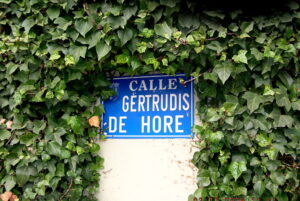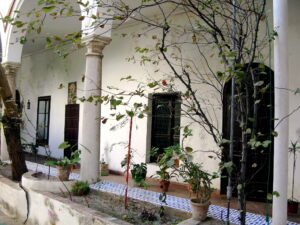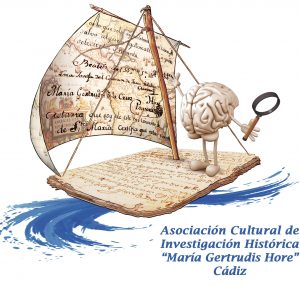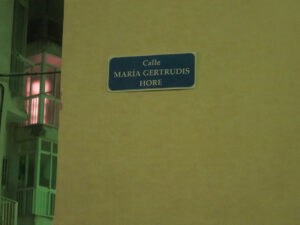

On Thursday, September 21, 2017, with the Friends of the Monastery of Santa María del Arrabal, the members of the ACIH, and the approval of the abbess Sister María Luz Suárez Meana we decided to remember the Cadiz poet María Gertrudis Hore y Ley (1742-1801) in the very cloister in which she lived the last 23 years of her existence.

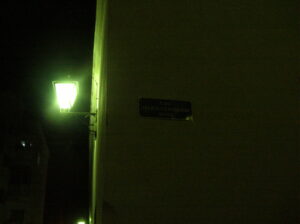
The reason for this literary meeting and its forbidden claim, inaugurate the first street of Cádiz with the name of the writer, being the only eighteenth-century woman – according to nineteenth-century critics – worthy of sharing fame with male writers of her time.
The place of choice: a curious alley, without a name, without a neighbor, with stairs and open on three fronts.
To gossip the evening, unforgettable and unrepeatable: An evening in the olive
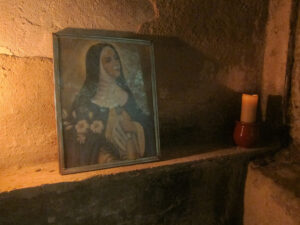
With the poet from Cádiz Jesús Fernández Palacios, in the presence of an enraptured audience we shared a unique, unrepeatable moment. We had gathered, people from the neighborhood, people from Cádiz, Paris, Madrid – around 15 people – to talk about our ephemeral and endearing association (ACIH), but above all to discover, in an unusual place – the closure – the poet from Cádiz who was on everyone's lips at the end of the eighteenth century.
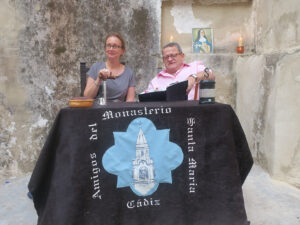
It was about 8 o'clock in the afternoon. For a few minutes people arrive through Mirador Street. Each one in due time passes through the immense door of weathered blue metal; Then, he is forced to lower his head, crouch – some more, others less, – to enter the Patio Olivo, a small cloister located in the oldest part of the monastery.
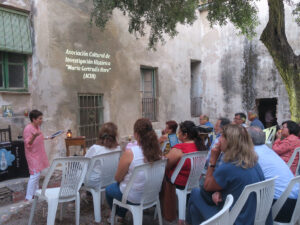
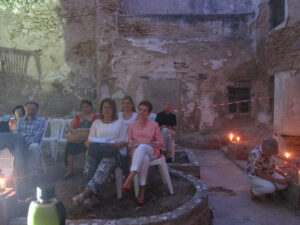
I remember the impression, the emotion of the attendees, that of one in particular with affection. Without leaving hardly a trace, the bonds between those present were woven transparent, stained with satisfaction for the unexpectedness of the meeting place, for its simplicity, not to mention its nakedness and abandonment. Among the monastic ruins we could see the bricks, the arches of the cloistered building, its primitive architecture. It was one of the places where, possibly, MG of the CH had his cell, although sure demonstration, none.
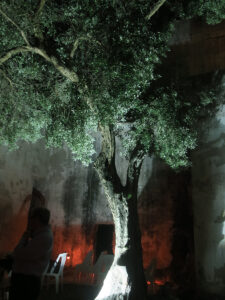
Take a look – if you feel like it – at what we all did after the meeting in the olive courtyard at sunset, when night falls. Surrounded by darkness, we left the enclosure and approached the corner of the forbidden alley.

A thorn sprouted from the disenchanted wall early the next morning, the embarrassed sign had vanished.
The ephemeral street: Maria Gertrudis Hore
The journalist of the Diario de Cádiz, surprised, was left alone in front of the desolate corner, without a photo to spread the event, while the then lonely and white walls of that nameless alley shouted on deaf ears. IAH dreamed of putting rhymes, verses and verses. A poetic alley, an alley for poets, a flowery alley with a bench to sit and read poetry. Not anymore.

It is strange, I speak of María Gertrudis Hore street and the sign of Torrejón de Ardoz street (Community of Madrid) reads: Gertrudis de Hore. Let us point out a nineteenth-century mania without scientific foundation, that is, not demonstrable in the time of the poetess, sometimes by the one interested in her correspondence, sometimes under the pen of her contemporaries, whose post-mortem repercussion pursues her. Until today. Well, this mania – the particle – was born in the nineteenth century under the pen of historians and literary critics, which is why the council of Torrejón de Ardoz named the street of the "Daughter of the Sun" Gertrudis de Hore. The model for his choice, probably, was the Library of Spanish Authors (BAE), a classic.
In the year… I asked the municipal council of Cádiz for some street, some square near the monastery of Santa María (all without a name) for the Daughter of the Sun, another Cadiz also dared. Resolution: DENIED. Now, the association CÁDIZ ILUSTRADA picks up the baton with enthusiasm and enthusiasm.
